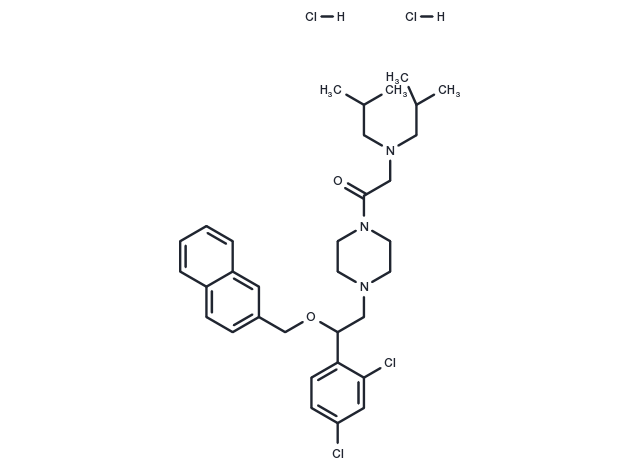Powder: -20°C for 3 years | In solvent: -80°C for 1 year


LYN-1604 is a novel ULK1 activator.It inducing cell death involved in ATF3, RAD21, and caspase3, accompanied by autophagy and apoptosis.

| Pack Size | Availability | Price/USD | Quantity |
|---|---|---|---|
| 1 mg | In stock | $ 48.00 | |
| 2 mg | In stock | $ 71.00 | |
| 5 mg | In stock | $ 118.00 | |
| 10 mg | In stock | $ 198.00 | |
| 25 mg | In stock | $ 372.00 | |
| 50 mg | In stock | $ 556.00 | |
| 100 mg | In stock | $ 783.00 | |
| 500 mg | In stock | $ 1,650.00 | |
| 1 mL * 10 mM (in DMSO) | In stock | $ 172.00 |



| Description | LYN-1604 is a novel ULK1 activator.It inducing cell death involved in ATF3, RAD21, and caspase3, accompanied by autophagy and apoptosis. |
| Targets&IC50 | ULK1:18.94 nM (EC50) |
| In vitro | LYN-1604, to be the best candidate for a ULK1 agonist.?LYN-1604 induced cell death involved in ATF3, RAD21, and caspase3, accompanied by autophagy and apoptosis.?LYN-1604 has potential for good therapeutic effects on TNBC by targeting ULK1-modulated cell death in vivo |
| Synonyms | LYN-1604 2HCl(2216753-86-3 free base) |
| Molecular Weight | 657.54 |
| Formula | C33H45Cl4N3O2 |
| CAS No. | 2310109-38-5 |
Powder: -20°C for 3 years | In solvent: -80°C for 1 year
DMSO: 25 mg/mL (38.02 mM)
You can also refer to dose conversion for different animals. More
bottom
Please see Inhibitor Handling Instructions for more frequently ask questions. Topics include: how to prepare stock solutions, how to store products, and cautions on cell-based assays & animal experiments, etc.
LYN-1604 dihydrochloride 2310109-38-5 Apoptosis Autophagy anti-tumor Unc-51 like kinase negative cancer LYN-1604 2HCl breast ULK1 LYN1604 Dihydrochloride ULK 2216753-86-3 free base LYN 1604 Dihydrochloride Inhibitor LYN1604 2216753-86-3 LYN1604 dihydrochloride LYN 1604 dihydrochloride activator TNBC LYN-1604 triple LYN-1604 2HCl(2216753-86-3 free base) LYN-1604 Dihydrochloride LYN 1604 inhibit inhibitor
